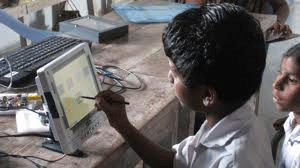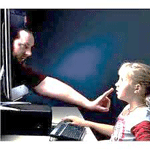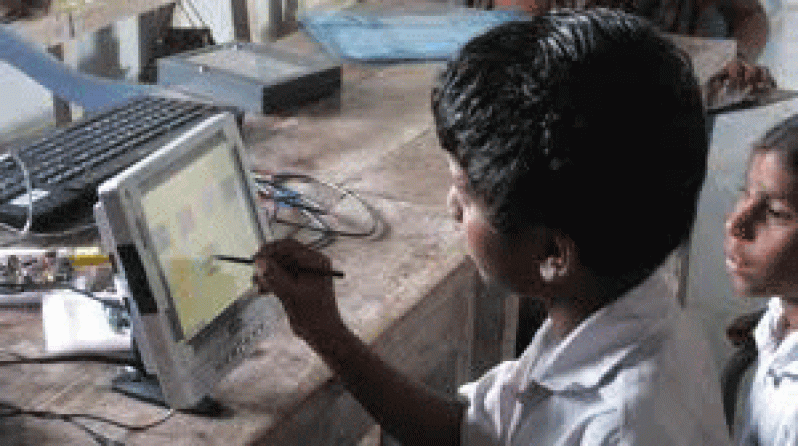Caring your laptop (Part I)
LAPTOP usage is now already pretty much widespread, ranging from home users to office workers, to educational institutions. But still, many people make mistakes in caring for a laptop, so the laptop is often easily damaged. Because of that, I reveal in this article how to treat a laptop or notebook.  This advice is so useful for you, the owner of the product!
This advice is so useful for you, the owner of the product!
As tempting as it might be to drink coffee, soda, water or any other liquid near your laptop, accidents can happen all too easily. Spilled liquids may damage the internal components, or cause electrical injury to the laptop. Short circuits can corrupt data, or even permanently destroy parts. The solution is very simple: Keep your drinks away from your computer. Even if you’re careful, someone else might bump into your desk or you. Or you can use a cup with a cover on it, so even if it does spill, the liquid doesn’t go anywhere! However, the best thing is to “keep liquids away from your laptop,” even if it’s not in use.
Having an available antivirus software would help. Even if you know what you download, it may contain a virus that can lead to a circuit error in your system hardware, or to slowness in the software.
Keep food away from your laptop. Don’t eat over your laptop. The crumbs can go down between the keys in the keyboard and provide an invitation to small bugs. The crumbs can also irritate the circuitry. Worse, it makes the laptop look dirty if there are crumbs and food stains on it. Now who wants an ugly and dirty looking laptop? No one, right? So stay far when munching.
Always have clean hands when using your laptop. Clean hands make it easier to use your laptop touchpad, and there will be less risk of  leaving dirt and other stains on the computer. In addition, if you clean your hands before use, you will help reduce wear and tear on the coating of the laptop, caused by contact with sweat and small particles that can act upon the laptop’s exterior underneath your wrists and fingers. You don’t want ants to invade your keyboard and ports. Always remember that cleanliness is next to…
leaving dirt and other stains on the computer. In addition, if you clean your hands before use, you will help reduce wear and tear on the coating of the laptop, caused by contact with sweat and small particles that can act upon the laptop’s exterior underneath your wrists and fingers. You don’t want ants to invade your keyboard and ports. Always remember that cleanliness is next to…
Protect the LCD display monitor. When you shut your laptop, make sure there are no small items, such as a pencil or small ear-phones, on the keyboard. These can damage the display screen when shut; the screen will get scratched if the item is rough. Close the lid gently, holding it from the middle. Closing the lid, using only one side, causes pressure on that hinge, and, over time, can cause it to bend and snap.
Hold and lift the computer by its base, not its LCD display (the screen). If you lift it by the screen part alone, you could damage the display or the hinges attaching it to the base. The display is also easily scratched or damaged by direct pressure. Avoid placing pressure on it. Unlike the desktop screens, it is quite difficult to acquire laptops screens/display ‘quickly’ in Guyana. Take good care of it, or else you’ll be like watching ‘TV’ in black-out!
Don’t pull on the power cord. Tugging your power cord out from the power socket rather than putting your hand directly on the plug in the socket and pulling can break off the plug, or damage the power socket. Also, if you have the power point near your feet, avoid constantly bumping into the plug or you could loosen it and eventually break it.
Don’t roll your chair over the computer cord. Stick the cord onto your desk with tape or a special computer cord tie which can be easily undone when you’ve finished using the laptop. Always try to keep most of the cord away from the floor or your legs; sometimes you can be so engrossed in what you’re doing that you move your legs and forget the cord is there.
Plug in accessory devices into their proper slots. Always look at the symbols on the laptop carefully before inserting devices. Jamming a phone line into an Ethernet port, or vice versa, could damage the sockets, making it impossible to use them again. It is very important to observe this step.
To be continued…
TechTalk…
SHARE THIS ARTICLE :
Facebook
Twitter
WhatsApp



.jpg)








